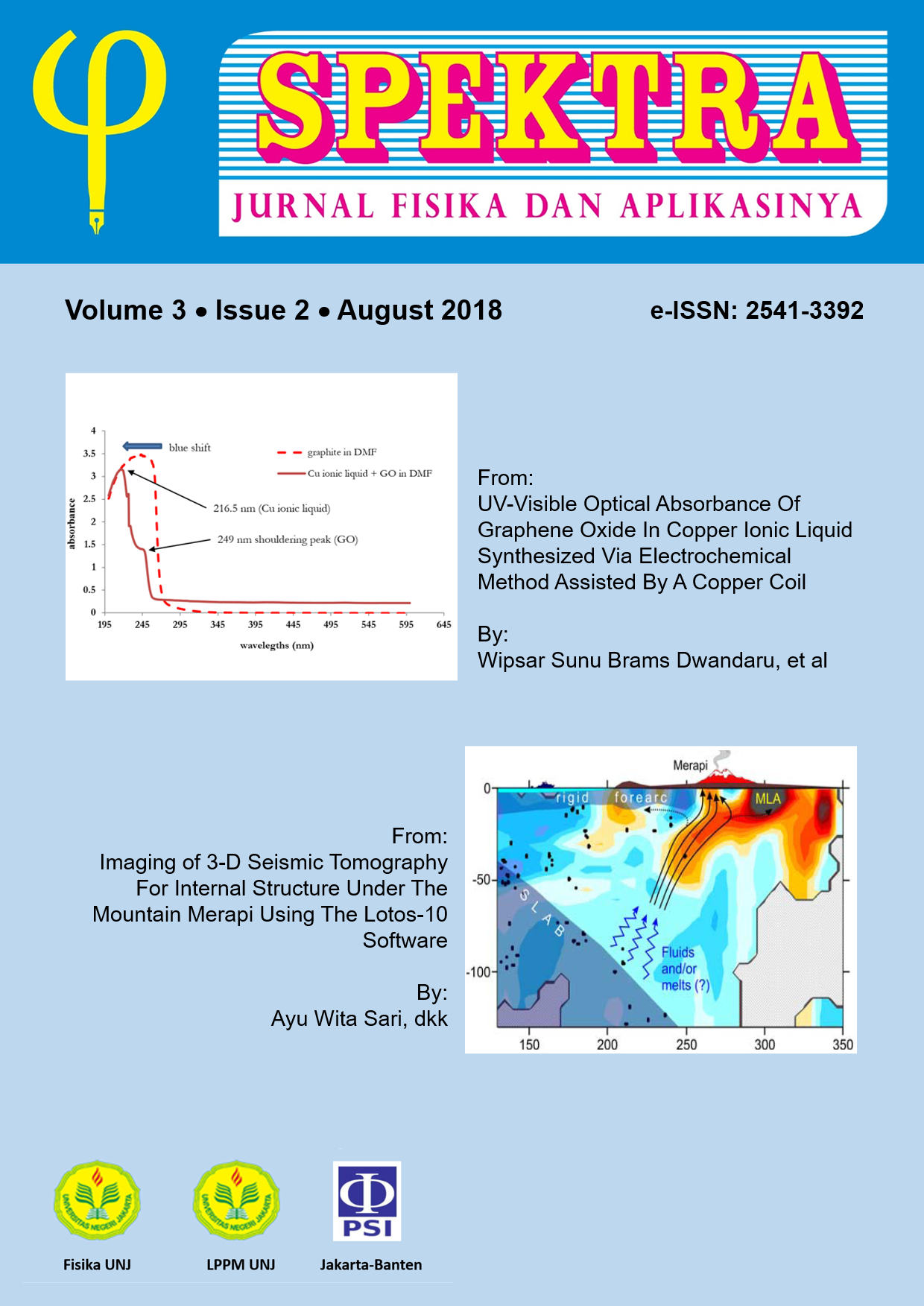FLOW UNITS DETERMINATION USING FLOW ZONE INDICATOR FOR CARBONATE RESERVOIR
DOI:
https://doi.org/10.21009/SPEKTRA.032.03Keywords:
reservoir quality, flow unit of reservoir rock, carbonate reservoirAbstract
In the last few years, the use of flow unit technique in the oil and gas industry has shown a great deal of success. Porosity and permeability from wire-line log and special core data analysis (SCAL) along with its cementation exponent value were integrated to characterize the reservoir in terms of pore volume caused by facies changing. In this work, we determine flow unit of the carbonate reservoir, which is applied to the Northwest Java Basin Field, Indonesia by performing the flow unit analysis, which allows approximating absolute permeability. Furthermore, the quantity and the flow unit of the reservoir rock is also determined to identify the secondary porosity. To reduce the level of uncertainty, wire-line logs data were validated with core data before it is used to interpret the reservoir. Subsequently, the result can be extrapolated to un-cored wells. Our experiment shows that flow units can be determined reliably from the integration between porosity and permeability, which have defined two different rock types in term of flow unit zone. The correlation of the flow units between wells leads to the definition of reservoir quality.
References
[2] R. A. Noble, Petroleum System of Northwest Java Indonesia. In Indonesian Petroleum Association 26th Proceeding, Jakarta, (1997), pp. 585 – 600.
[3] J. Garland, J. Neilson, S. E. Laubach, and K. J. Whidden, Advances in carbonate exploration and reservoir analysis. Geological Society, London, Special Publications, (2012). vol. 370, no. 1, pp. 1-15.
[4] G. M. Hamada, A. A. Almajed, T. M. Okasha, and A. A. Algathe, Uncertainty analysis of Archie’s parameters determination techniques in carbonate reservoirs. Journal of Petroleum Exploration and Production Technology, (2013). vol. 3, no. 1, pp. 1-10.
[5] G. B. Asquith, and C. R. Gibson, Basic Well Log analysis for Geologists AAPG Methods in Exploration Series. American Association Petroleum Geologist, (1982). Oklahoma. 216.
[6] W. J. Ebanks Jr, M. H. Scheihing, and C. D. Atkinson, Flow units for reservoir characterization. Development geology reference manual: AAPG Methods in Exploration Series, (1992). vol. 10, pp. 282-285.
[7] A. Mirzaeiâ€Paiaman, H. Saboorianâ€Jooybari, and P. Pourafshary, Improved method to identify hydraulic flow units for reservoir characterization. Energy Technology, (2015). vol. 3, no. 7, pp. 726-733.
[8] F. J. Lucia, Petrophysical parameters estimated from visual descriptions of carbonate rocks: a field classification of carbonate pore space. Journal of petroleum technology, (1983). vol. 35, no. 3, pp. 629-637
[9] C. Y. AkbaÅŸ, Determination of Flow Units for Carbonate Reservoirs by Petrophysical-Based Methods (Doctoral dissertation, Middle East Technical University), (2005).
[10] J. A. Rushing, K. E. Newsham, and T. A. Blasingame, Rock typing: Keys to understanding productivity in tight gas sands. In SPE Unconventional Reservoirs Conference. Society of Petroleum Engineers, (2008, January).
[11] B. Abrar, F. Wisaksono, and A. Soendaroe, Flow Units Characterization and Application of Matrix Exponential Value (‘M-Value’) to Identify Secondary Porosity in Carbonates: A Successful Story to Identify By-Passed Oil and Increase Production. In 36th annual Conference Proceedings Indonesian Petroleum Association, (2012).
[12] Z. Riazi, Application of integrated rock typing and flow units identification methods for an Iranian carbonate reservoir. Journal of petroleum science and engineering, (2018). vol. 160, no. 1, pp. 483-497.
[13] P. J. R. Fitch, Heterogeneity in the petrophysical properties of carbonate reservoirs (Doctoral dissertation, University of Leicester), (2011).
Downloads
Published
How to Cite
Issue
Section
License
SPEKTRA: Jurnal Fisika dan Aplikasinya allow the author(s) to hold the copyright without restrictions and allow the author(s) to retain publishing rights without restrictions. SPEKTRA: Jurnal Fisika dan Aplikasinya CC-BY or an equivalent license as the optimal license for the publication, distribution, use, and reuse of scholarly work. In developing strategy and setting priorities, SPEKTRA: Jurnal Fisika dan Aplikasinya recognize that free access is better than priced access, libre access is better than free access, and libre under CC-BY or the equivalent is better than libre under more restrictive open licenses. We should achieve what we can when we can. We should not delay achieving free in order to achieve libre, and we should not stop with free when we can achieve libre.
 SPEKTRA: Jurnal Fisika dan Aplikasinya is licensed under a Creative Commons Attribution 4.0 International License.
SPEKTRA: Jurnal Fisika dan Aplikasinya is licensed under a Creative Commons Attribution 4.0 International License.
You are free to:
Share - copy and redistribute the material in any medium or format
Adapt - remix, transform, and build upon the material for any purpose, even commercially.
The licensor cannot revoke these freedoms as long as you follow the license terms.

 E-ISSN 2541-3392
E-ISSN 2541-3392  Focus & Scope
Focus & Scope  Editorial Team
Editorial Team  Reviewer Team
Reviewer Team  Author Guidelines
Author Guidelines  Article Template
Article Template  Author Fee
Author Fee  Publication Ethics
Publication Ethics  Plagiarism Policy
Plagiarism Policy  Open Access Policy
Open Access Policy  Peer Review Process
Peer Review Process  Retraction & Correction
Retraction & Correction  Licensing & Copyright
Licensing & Copyright  Archiving & Repository
Archiving & Repository  Contact
Contact  Mendeley
Mendeley 

